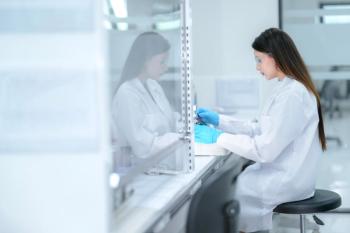
Interchangeability Status in Biosimilars
Defining what it means to have an “interchangeability” designation as it relates to biosimilars and insight on challenges with regulations of holding this status.
RELATED VIDEOS
- FDA Approval Process of Biosimilars
- Comparison of Biosimilars vs Biologic Agents
Anthony Mato, MD, MSCE: Let’s delve in a little more deeply into the definitions that are required for knowledge in this area, and let’s talk a little about the term interchangeability. Can you explain what exactly that means? Can you also try to discuss whether there are any biosimilars that actually meet that definition at this time?
Bhavesh Shah, RPh, BCOP: Sure. It’s interesting because there’s a lot of talk around interchangeability, and I think a lot of folks don’t understand that it’s a regulatory term. Currently there are no products that are approved that have interchangeability designation. Basically, interchangeability occurs at the distribution level, at the pharmacist level, where the pharmacist could actually substitute 1 drug for another without the provider’s authority. Of course, all states have regulations around this. It’s more at the distribution level, at the pharmacy level, than at an institutional level, where providers and pharmacists actually make determination on switching their patient based on the clinical profile of patient.
There’s a lot of misconception around the interchangeability status because a lot of folks think interchangeability means that it has a higher standard because the FDA requires more data for it to be classified as an interchangeable status. However, it goes through the same pathway as a biosimilar similarity pathway, so there’s not a significant change in status of it because it has interchangeability status.
Anthony Mato, MD, MSCE: Marc, can you give me any example where you’d want a drug to have interchangeability status, where that would be important?
Marc Earl, PharmD, BCOP: It’s more from the pharmacist intervention perspective. You would be able to switch a biosimilar to any of the preferred biosimilars without letting the physician know. That’s not a process that we’ve adopted. We have been transparent with our physicians. We have that buy-in prior to switching to a certain product. I don’t know that interchangeability plays a big role in our practice either related to this space.
Tim Peterson, PharmD, BCOP: Another important factor in this that you touched on a little is the state-by-state variability and legislation with regard to pharmacy-level substitution. I know that some states are starting to adapt the wording that they have in these regulations to accommodate the biosimilar network. Do you think there’s going to be further changes, with regard to the wording, with these legislations on a state-by-state basis if there is to be a biosimilar that attains that certification of being interchangeable?
Bhavesh Shah, RPh, BCOP: I’m not sure. That may address 1 biosimilar, but then you have multiple biosimilars and that regulation was not going to address how you address interchangeability between a biosimilar to a biosimilar. There are a lot of challenges with the whole term in regulation still.
Anthony Mato, MD, MSCE: It’s really interesting to think about because from the limited experiences I’ve had with biosimilars, there are subtle differences that need to be known. One example would be the use of G-CSF, and I think you guys were mentioning this previously where there is a latex allergy question associated with the needle or the rubber around the particular product. I guess we’d have to know which product is given to the patient if an adverse event happened. It would be nice to know in advance that type of information. I could see that there could be a lot of questions when that comes into play.
Newsletter
Stay informed on drug updates, treatment guidelines, and pharmacy practice trends—subscribe to Pharmacy Times for weekly clinical insights.





















































































































































































































